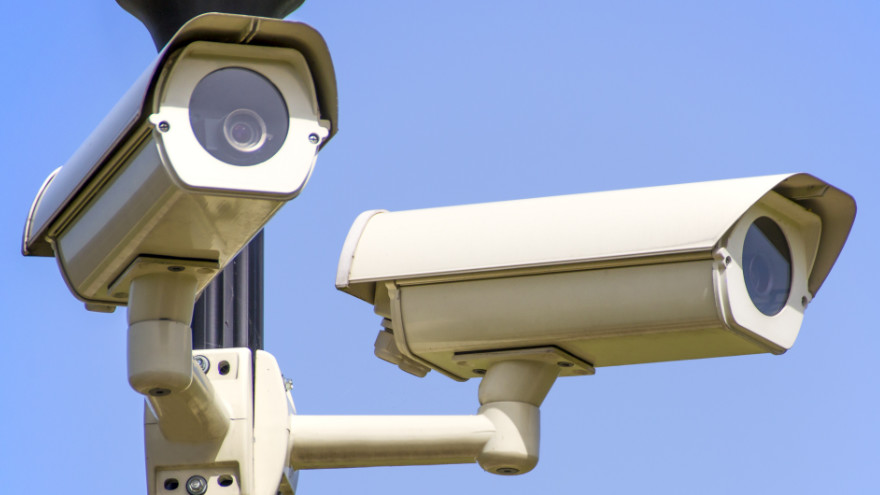
While he states that very few people are talking about video for the IoT, Renkis sees a compelling tie between the two. He points to the Cisco VNI (Visual Networking Index) report, which forecast that by 2021 over 80% of consumer Internet traffic will be video. He asserts that video offers IoT providers “an easy way to monetize their services.”
Video Surveillance A Key: Almost Twice YouTube’s Daily Volume
He cites numerous situations where video surveillance and/or collection of information from IoT devices is highly important, even vital. These include: parking meters, street lighting, industrial lighting, drones, robots, carrier networks, and others. Supporting Renkis’ view of the potential growth in video surveillance, the Cisco report states:
“Internet video surveillance traffic increased 72 percent in 2016, from 516 Petabytes (PB) per month at the end of 2015 to 883 PB per month in 2016. Internet video surveillance traffic will increase sevenfold between 2016 and 2021.”
The company maintains a cloud-based platform and serves a wide range of use cases, from home surveillance to drones. Renkis emphasizes, as a key selling point, the security features of their platform. He states, “With every carrier we meet with today, the conversation starts with, ‘What about security?'” He explains, “Because we own the platform we can encrypt the software at every stage – at the sensor, in the cloud, on the app.”
Smartvue can boast of customers including: HP Enterprise (for their IoT network); Google; UPS; Time Warner Cable; leading cable industry supplier Arris; smart industrial helmet provider Daqri; garage door opener manufacturer Ryobi.
Renkis states, “We upload 72.6 million videos to the cloud every day, almost twice the volume of YouTube.”
Product Focus
Renkis is very clear in stating Smartvue’s product strategy. He explains that they are experts in gathering, transmitting, storing and managing video. He says that while it may sound “boring” to some, it is an increasingly vital function as the amount and usage of video escalates. He likens them to the CRM (customer relationship management) companies, such as Salesforce, who offer somewhat analogous services for basic business processes.
He states, “We love the technology.” This is reflected in the fact that the company workforce is overwhelmingly dominated by engineers (70% of the total employees). This has contributed to Smartvue establishing an extensive and growing position in video related patents, of which they already possess over 40 and have many additional applications pending.
While the company does make cameras, its system accommodates a wide range of cameras available on the market. Renkis makes it clear that their interest is not in selling equipment for the front end of the video collection process, but rather in supplying the cloud-based backend expert skills.
It offers server products, such as its Smartvue S12R “an enterprise HD video surveillance recorder and cloud server platform,” which serves up to 100 cameras and has 72 tBs of storage. It offers what it describes as “social surveillance” with an app that can connect “any smartphone, tablet or computer cameras” of security personnel to the Smartvue surveillance network.
Marketing Strategy
Smartvue’s fundamental strategy is to sell through third parties. They don’t customarily deal with end users. Renkis explains that they have tried direct selling, as well as selling through reps and partners.
They view some of their customers as key partners in distribution. For example, Arris will deliver residential video surveillance solutions using Smartvue’s platform.
Our Take
When we first wrote about Smartvue, in early 2015 (“Smartvue – Video Apps That Change Business Processes” 1/12/15) they were focused on providing video services aimed at retail and fast food (or QSR, quick service restaurants).
They are one of many companies that illustrate how fast the rate of change is and how widely engulfing the rise of the IoT is for enterprise strategies.
Obviously, establishing an extensive video platform, involves a good deal of up front costs. Renkis states that the platform, and particularly the costs of the cloud, which they maintain on Microsoft Azure, as well as the expense of their extensive engineering team, are the major expense drivers. But he states that they have now covered their fixed expenses and as the business scales, incremental margins can be very attractive.
We agree that the amount of video is only going to escalate rapidly, with the IoT likely to be a strong contributing factor. One question that arises is the issue of who will supply the analytics, including the use of machine learning to help users interpret and utilize all of this video.
At this point, Renkis is steadfast that the company will leave the heavy lifting in AI and related disciplines to other companies, mentioning the likes of Microsoft, Google and IBM. Smartvue, he states, is determined to continue on its path of excelling at the handling of video. It would appear to us that at some point some of the larger companies could find it intriguing to combine a first class video management platform with their growing analytic skills and product offerings. Smartvue could attract a good deal of attention.
Visit their website:
www.smartvue.com
